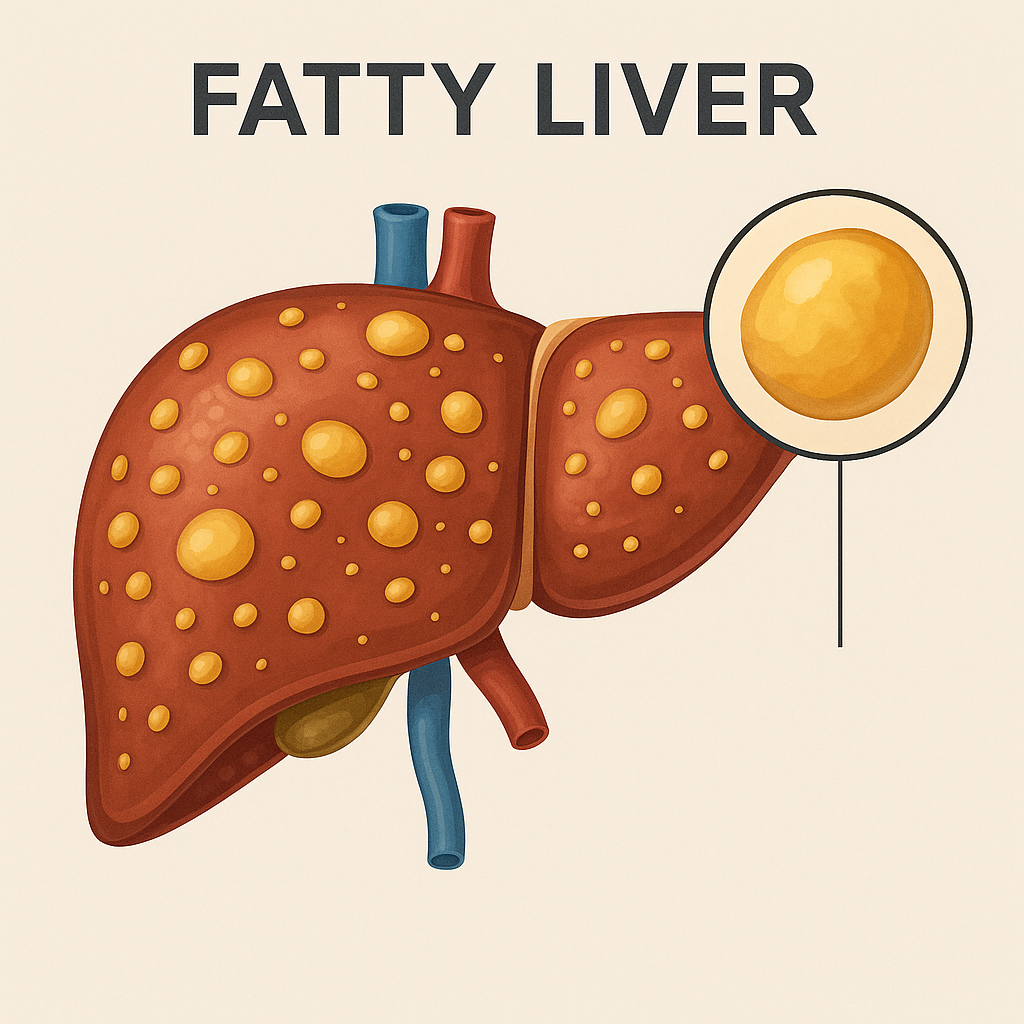What Is a Fatty Liver Attack?
While not an official medical diagnosis, a “fatty liver attack” refers to a sudden flare-up of symptoms in individuals with fatty liver disease, especially when fat buildup leads to inflammation or impaired liver function. It’s your body raising a red flag—and you should never ignore it.
Left unchecked, this can lead to non-alcoholic steatohepatitis (NASH), fibrosis, or even cirrhosis—all progressive and potentially life-threatening liver conditions.
8 Signs Your Liver Is Asking for Help
1. Chronic Fatigue
If you’re always tired—even after a full night’s sleep—it may not just be burnout. A sluggish liver can’t clear toxins efficiently, leaving you drained.
2. Discomfort in the Upper Right Abdomen
A nagging ache beneath your ribs could be inflammation. When your liver is inflamed or enlarged, it makes itself felt in subtle but persistent ways.
3. Weight Gain or Inability to Lose Fat
If your waistline expands even with clean eating and regular workouts, your liver might be struggling to metabolize fat.
4. Yellowing of Skin and Eyes (Jaundice)
When bilirubin builds up due to poor liver function, it can cause skin and eyes to turn yellow. It’s a serious warning—don’t delay seeing a doctor.
5. Swollen Legs or Abdomen
Fluid buildup (edema or ascites) often points to advanced liver dysfunction, especially if the swelling is persistent and unexplained.
6. Unusual Urine and Stool Color
Dark urine or pale stools are indicators that your liver may not be processing bile properly.
7. Loss of Appetite or Digestive Discomfort
Persistent nausea, bloating, or reduced appetite may signal that your liver’s filtering system is struggling.
8. Brain Fog
Difficulty focusing or memory lapses? Toxins that the liver can’t filter may be affecting your brain—a condition called hepatic encephalopathy.
What Triggers a Fatty Liver Attack?
A fatty liver doesn’t flare up out of nowhere. These are the most common culprits:
-
Poor diet: High in sugar, processed foods, or unhealthy fats
-
Alcohol consumption: Even moderate drinking can cause liver stress
-
Obesity: Especially belly fat
-
Diabetes and insulin resistance: Raise liver fat accumulation
-
Certain medications: Including steroids and some pain relievers
-
Rapid weight loss: Floods the liver with fat from fat stores
How to Prevent and Manage Fatty Liver Disease
The encouraging news? Fatty liver disease is reversible in its early stages. Here’s how to take control:
1. Embrace a Liver-Friendly Diet
Choose whole foods rich in antioxidants—think berries, leafy greens, salmon, and flaxseeds. Ditch refined sugars, processed snacks, and trans fats.
2. Maintain a Healthy Weight
Losing even 5–10% of your body weight can drastically improve liver function. Aim for slow, steady progress—not crash diets.
3. Stay Active
30 minutes of moderate exercise a day—walking, swimming, or cycling—can lower liver fat and boost insulin sensitivity.
4. Avoid Alcohol
If you already have fatty liver, cutting alcohol out completely is one of the most powerful actions you can take.
5. Control Blood Sugar and Cholesterol
Regular checkups and a balanced diet help manage the root causes of liver stress.
6. Hydrate and Rest Well
Water fuels liver detox. Sleep (7–9 hours) enables your body to repair and process waste more efficiently.
When Should You See a Doctor?
Don’t wait until the signs are unmistakable. If you’re experiencing persistent fatigue, abdominal pain, yellowing eyes or skin, or other signs mentioned above—seek medical advice immediately.
Early diagnosis can make all the difference. So can a few life-changing habits.
Final Thoughts: A Gentle Wake-Up Call
Your liver is a quiet hero—working 24/7 to keep you healthy. But when it struggles, it speaks. Softly at first. Then louder.
Listen before it has to shout.
Take steps now to protect your liver—and your future. Because wellness isn’t built in a day. It’s built in every choice you make today.

